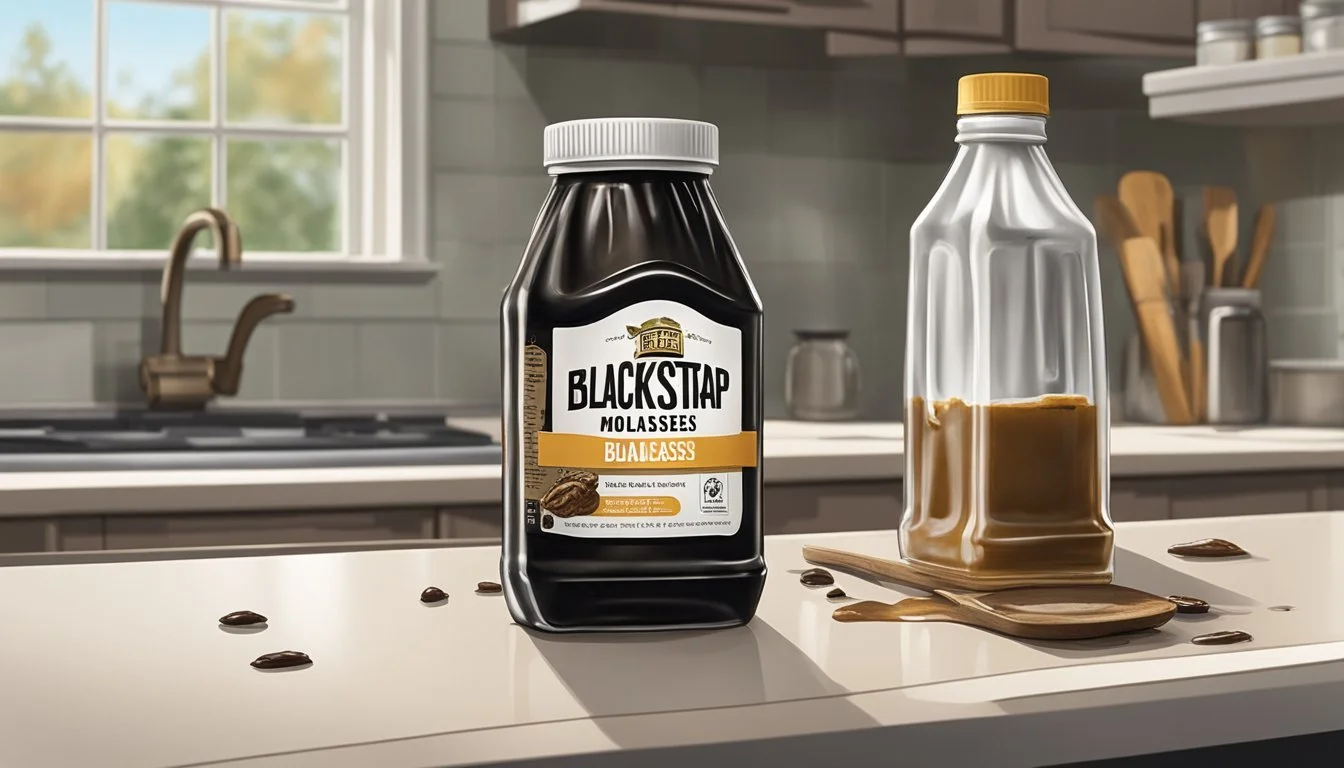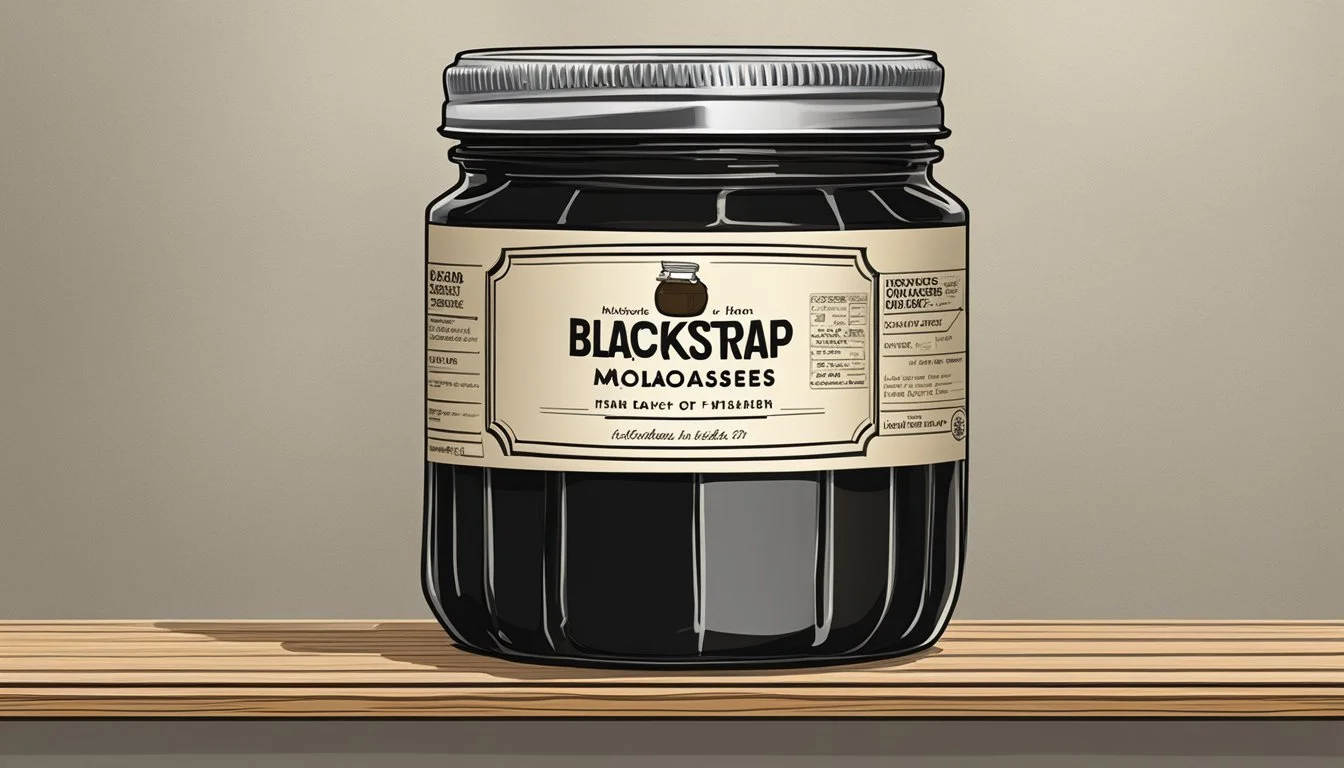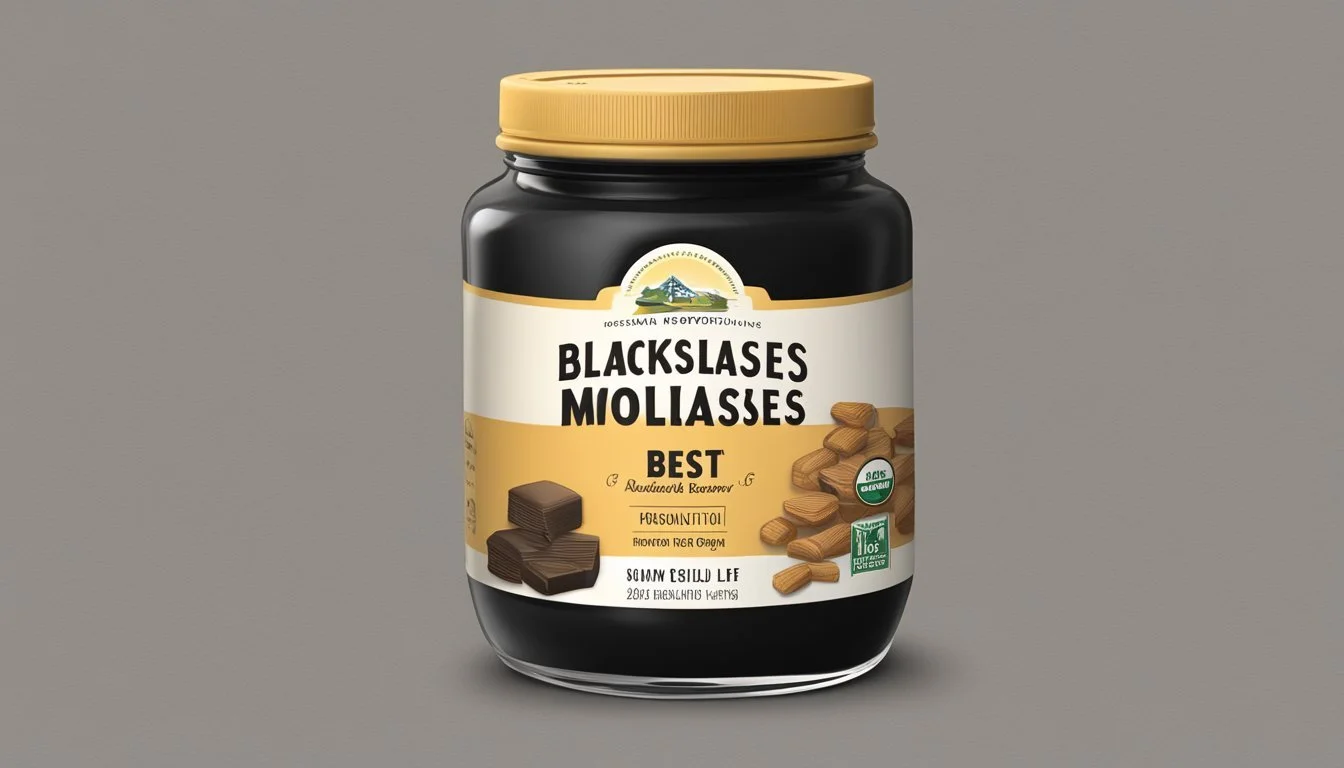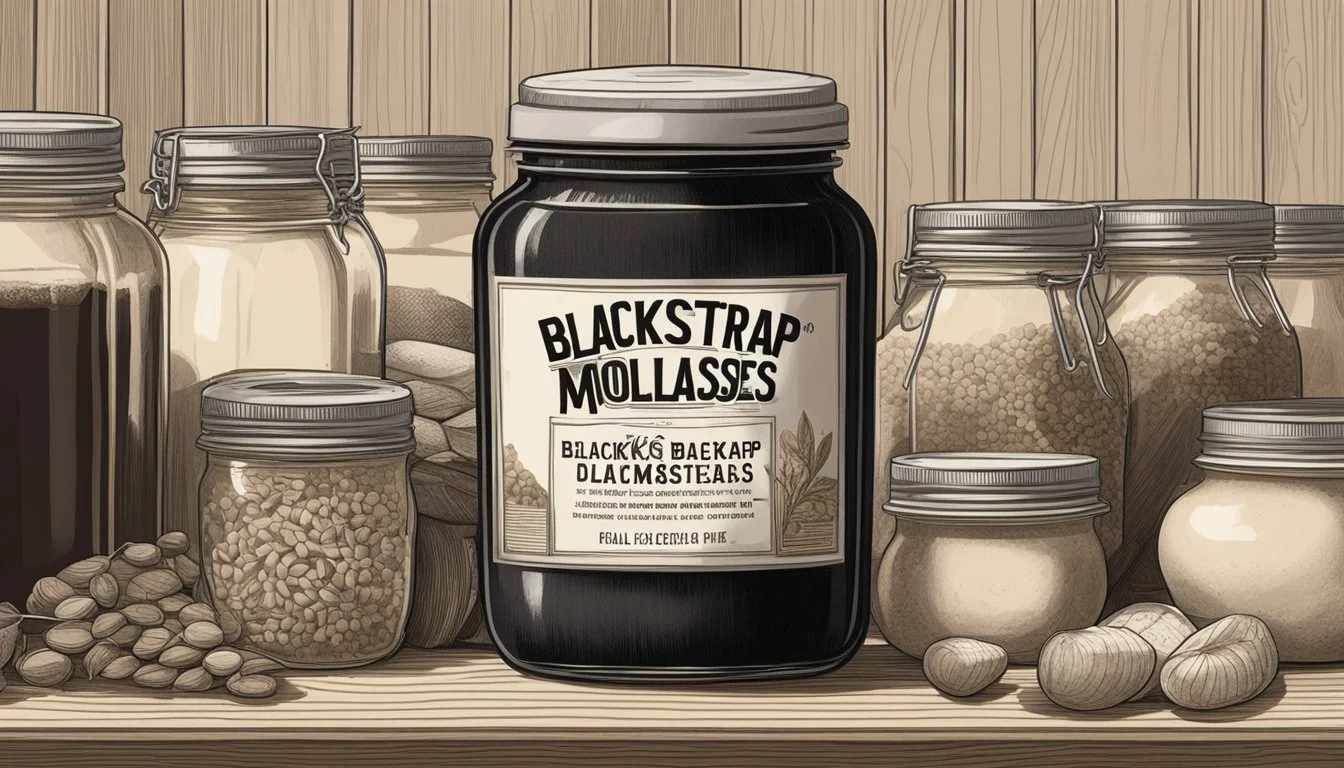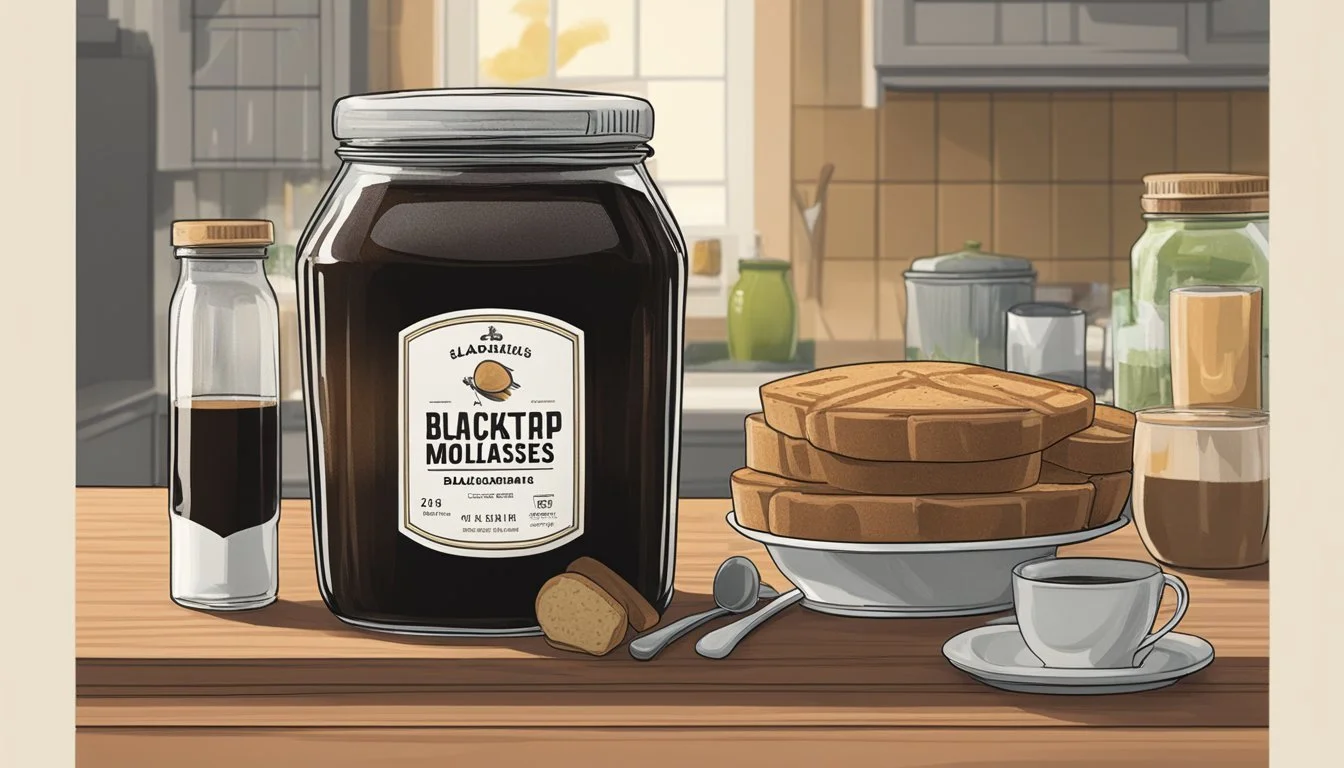How Long Does Blackstrap Molasses Last?
Shelf Life and Storage Tips
Blackstrap molasses, a byproduct of sugar cane's refining process, is known for its robust flavor and rich nutrient content. Its shelf life is a point of interest for consumers who value its distinct taste and health benefits. Typically, blackstrap molasses, when stored properly, can last a significant amount of time. An unopened bottle of this molasses variety has the potential to maintain its quality for years, with many manufacturers suggesting a shelf life of one to two years for optimal quality, and some sources even claiming it can remain good for up to ten years under ideal storage conditions.
Once opened, the longevity of blackstrap molasses can be impacted by several factors, including storage methods and environmental conditions. To preserve its quality, an opened container should be kept in a cool, dry place such as a pantry. Exposure to heat and moisture can accelerate the degradation process, so it is recommended to avoid storing it near stoves, sinks, or in direct sunlight. While refrigeration is not required, it can provide a consistent temperature that may further extend its shelf life, especially in warmer climates. Typically, opened blackstrap molasses is best used within a year to ensure its flavor and nutritional value are maintained.
Understanding Blackstrap Molasses
Blackstrap molasses is a byproduct derived from the process of refining sugar cane or sugar beets into sugar. Unlike light molasses, obtained from the first boiling, and dark molasses, from the second boiling, blackstrap molasses comes from the third boiling of the sugar syrup.
Composition and Nutrition: This type of molasses is characterized by its robust flavor and dark color. It is thicker than light and dark molasses and has a bitter taste. Nutritionally, blackstrap molasses is rich in essential minerals and vitamins. It's a good source of iron, calcium, and magnesium, making it a nutritious option for those looking to supplement their diet with these minerals.
Types of Molasses:
Light Molasses: The sweetest, lightest colored, and thinnest variety.
Dark Molasses: Darker and thicker with a more pronounced flavor.
Blackstrap Molasses: The densest and most bitter, packed with minerals.
Sulfured vs. Unsulfured:
Sulfured Molasses: Sulfur dioxide is added as a preservative during the sugar extraction process.
Unsulfured Molasses: Made from sun-ripened sugar cane without sulfur.
Although blackstrap molasses can be used as a sweetener, its intense flavor may not be ideal for all culinary applications. Instead, it is often used to provide a distinctive flavor in baked goods, as a health supplement, or in savory dishes that benefit from its richness. When stored properly in a cool, dry place, blackstrap molasses can last a long time, maintaining its quality and health benefits.
Shelf Life Determinants
The longevity of blackstrap molasses is influenced by how it's stored and its inherent quality characteristics, which can change over time. Proper understanding and application of these factors ensure its lasting freshness and flavor.
Impact of Storage Conditions
Temperature: Maintaining a consistent, cool temperature is vital. Blackstrap molasses should be kept in a cool pantry or cupboard, ideally around 50-70°F (10-21°C), to prevent spoilage.
Light and Air: Exposure to light and air can degrade quality. Store it in a dark place, away from direct sunlight, and ensure the container is airtight to minimize oxidation.
Humidity: A dry environment is necessary to discourage microbial growth. Any presence of moisture can lead to contamination, impacting the molasses' longevity and quality.
Quality Factors Over Time
Flavor: Over time, the robust flavor of blackstrap molasses may diminish if exposed to varying conditions. Maintaining stable storage conditions preserves its rich taste.
Texture and Color: Proper storage preserves its viscous texture and deep color. Fluctuations in storage conditions can affect viscosity, potentially leading to crystallization.
Contamination: Keeping the lid tightly closed ensures that blackstrap molasses is shielded from contaminants that can affect flavor, smell, and overall quality.
By adhering to these specific storage guidances, blackstrap molasses can sustain its quality factors over time, including sweetness derived from sugar, flavor, smell, color, and texture.
Storage Guidelines
Proper storage is crucial for maintaining the quality and extending the shelf life of blackstrap molasses. Attending to factors like temperature, light, and container seal will ensure the molasses retains its desirable characteristics.
Optimal Storage Conditions
Blackstrap molasses should be stored in a place that is cool, dry, and dark. A pantry away from heat sources and light is ideal, as these conditions help prevent degradation of quality. Ideally, the temperature should be kept constant to discourage the growth of mold due to any fluctuations that could introduce unwanted moisture.
Temperature range: Best at room temperature (50-70°F / 10-21°C)
Avoid: Direct sunlight, proximity to heat sources (stove, oven, etc.), high humidity areas.
Container and Preservation
Store molasses in an airtight container with a secure lid to protect it from moisture and air, both of which can lead to spoilage. Blackstrap molasses is hygroscopic, meaning it can draw moisture from the environment, which encourages microbial growth.
Container materials: Glass or food-grade plastic.
Lid: Must be tight-fitting; corrosion-resistant if metal.
Extended Storage Solutions
Although not typically necessary, refrigeration can prolong the shelf life of molasses if room conditions are not ideal. Freezing molasses is generally not recommended, as it's very thick and won't freeze solid, and the thawing process can degrade the quality.
Refrigeration: Can extend freshness; ensure container is well-sealed.
Freezing: Not advised, but possible if no other options are viable.
Signs of Spoilage
In determining whether blackstrap molasses has spoiled, one should look for visible mold and bacterial growth, changes in texture and consistency, and alterations in odor and flavor. These are clear indicators that the molasses should not be consumed.
Mold and Bacterial Growth
Mold presence is one of the most observable signs that blackstrap molasses has spoiled. If one notices mold on the surface or signs of bacterial growth, the molasses is compromised and poses a risk for foodborne illness. Mold may appear as fuzzy spots which can be various colors, and any visible mold suggests that unseen bacteria may also be present.
Changes in Texture and Consistency
Blackstrap molasses should have a thick, syrupy consistency. Any signs of crystallization or separation may indicate spoilage. Although crystallization itself isn't harmful and can occur naturally over time, it does change the texture and consistency of the molasses. A molasses that has noticeably thickened beyond its typical viscosity could also signify spoilage.
Odor and Flavor Alterations
A taste test is another method to check for spoilage, but it should be done cautiously and only after visual inspection. Spoiled blackstrap molasses may have an unpleasant odor and a flavor that differs significantly from its naturally bitter, robust taste. If the molasses emits an off-putting smell, it's likely that the quality has deteriorated and it should not be used.
Usage and Applications
Blackstrap molasses is a robust and nutrient-rich byproduct of sugar cane's refining process that offers unique culinary applications and serves as an alternative to other sweeteners.
Culinary Uses of Blackstrap Molasses
In cooking, blackstrap molasses is a pivotal ingredient known for its rich, distinct flavor. Chefs and home cooks utilize it notably in baking, where its depth complements the spices in traditional gingerbread recipes. The versatility of blackstrap molasses extends to sauces and marinades, infusing a rich, caramelized sweetness to dishes. Moreover, its utility in creating the complex flavor profiles in barbecue sauces is well-regarded.
Baking: Ideal for gingerbread, cookies, and cakes
Sauces & Marinades: Enhances flavors in barbecue and other sauces
Cooking: Integral in recipes for baked beans
Alternative Sweeteners
Blackstrap molasses can act as a substitute for refined sugar, honey, or maple syrup in various recipes, providing a lower glycemic index option for those seeking healthier alternatives. Notably, it comes in two varieties: sulfured and unsulfured. Sulfured molasses has sulfur dioxide added as a preservative, often during the processing of young, green sugarcane, while unsulfured molasses is made from mature sugarcane with no additives.
Substitute: Can replace refined sugars, honey, or maple syrup
Types: Available as sulfured or unsulfured, with a preference for unsulfured in health-conscious cooking
When substituting molasses for other sweeteners, it is typically used in a 1:1 ratio, though adjustments may be made to the overall recipe to accommodate its distinct flavor and liquid nature.
Product Shelf Life
Blackstrap molasses, a byproduct of sugar production, offers a distinctive bittersweet flavor and a variety of uses in the kitchen. Its shelf life is influenced by several factors including storage conditions and whether the jar is opened or unopened.
Manufacturer's Expiration Date
Manufacturers typically provide a best-before date on the packaging of blackstrap molasses, indicating the period during which the product is expected to retain its best quality. An unopened jar of blackstrap molasses generally has a lengthy shelf life, extending up to 10 years when stored properly. However, to ensure maximum quality, manufacturers often recommend consuming it within one to two years from the date of production.
Estimating Freshness Post-Opening
Once opened, the longevity of blackstrap molasses hinges on proper storage. To maintain its freshness, one should store the opened jar in a cool, dry place such as a pantry. This can extend the molasses's shelf life for up to 6 months to 1 year post-opening, depending on storage conditions. To ascertain freshness, visual and olfactory examinations for changes in color, texture, and smell are suggested.
Handling and Maintenance
The lifespan of blackstrap molasses is notably extended through careful handling and diligent maintenance. Attention to the jar's integrity and cleanliness plays a pivotal role in preventing contamination and preserving quality.
Proper Opening and Closing of Jars
When opening a jar of blackstrap molasses, one should ensure that the lid is removed with care to avoid deforming it. A deformed lid may not provide an airtight seal when closed, potentially allowing air in and compromising the molasses. Upon closing, the lid must be secured firmly to reestablish an airtight environment that minimizes the risk of contamination and oxidation.
Opening: Gently twist the lid without applying excessive force.
Closing: Align the lid properly and tighten it until it is snug, ensuring no gap remains.
Preventing Contamination
Maintaining the purity of blackstrap molasses is crucial for its preservation. Users should always use clean utensils to extract molasses from the jar to avoid introducing bacteria or other contaminants. Once contaminated, molasses can become a breeding ground for bacteria, which may accelerate spoilage.
Utensils: Only use clean spoons or measuring cups.
Jar Handling: Avoid touching the inside of the jar with hands or dirty utensils.
By adhering to these handling and maintenance guidelines, one can ensure the quality and longevity of blackstrap molasses in an airtight container.
Practical Tips and Tricks
When storing and using blackstrap molasses, it is crucial to understand how to handle crystallization and determine if the molasses has spoiled. The following tips will help you maintain the quality of your molasses and identify suitable substitutes when necessary.
Reviving Crystallized Molasses
When molasses crystallizes, it's still safe to consume — it just requires warming to return to a pourable state. This crystallization occurs more commonly in cooler temperatures and isn't a sign of spoilage. To revive crystallized molasses:
Microwave Method: Transfer molasses to a microwave-safe container and heat in short intervals, stirring between each until the crystals dissolve.
Stovetop Method: Place the jar in a pan of warm water on the stove, ensuring the water level is below the lid. Heat on low, occasionally stirring the molasses until it liquifies.
Replacing Spoiled Molasses
Molasses may spoil if exposed to extreme conditions, though it has an impressive shelf life. Signs that molasses has gone bad include:
Offensive Odor: Spoiled molasses will smell sour or off.
Visible Mold: Any visible signs of mold growth indicate spoilage.
If one finds their molasses is bad, they can substitute:
Honey or Maple Syrup: Use equal parts as a substitute, keeping in mind flavor differences.
Brown Sugar: To replicate the flavor, one can dissolve brown sugar in hot water and use it as a 1:1 substitute.
In warm climates, storage conditions play a vital role in preventing spoilage, so blackstrap molasses should be stored in a cool, dry place away from direct sunlight.
Nutritional Information and Benefits
Blackstrap molasses is a nutrient-rich byproduct of the sugar-making process. Unlike refined sugars, it retains much of the nutritional value from the sugar cane, making it an excellent source of vitamins and minerals.
Key Minerals:
Iron: Vital for blood health, particularly hemoglobin production.
Calcium: Essential for bone health and functions in blood coagulation.
Magnesium: Important for muscle and nerve function, blood glucose control, and bone health.
In addition to these minerals, blackstrap molasses offers a spectrum of B vitamins, which play a role in energy production and contribute to overall metabolic health.
Nutritional Breakdown: (Approximate values per tablespoon)
Calories: 60
Protein: 1 gram
Fat: 0 grams
Carbohydrates: 14 grams
Fiber: Less than 1 gram
Sugar: 10 grams
The health benefits of these nutritional components are varied. The iron content makes it a favorable option for those managing anemia or iron deficiency. The calcium and magnesium levels assist in maintaining strong bones and teeth while supporting the nervous system.
The sugar content present in blackstrap molasses is naturally occurring, making it a better alternative to refined sugars, as the body processes natural sugars differently and they come with the added benefit of nutrients.
Blackstrap molasses is not only a source of quick energy due to its sugar content but also serves as a helpful supplement for boosting a person's daily intake of essential minerals and vitamins.
Comparative Analysis
In evaluating the shelf life of blackstrap molasses, it's instructive to compare it with other sweeteners and to consider the distinction between sulfured and unsulfured varieties.
Blackstrap Molasses vs. Other Sweeteners
Blackstrap molasses differs significantly from other sweeteners like sugar, honey, and maple syrup in terms of both flavor and nutritional content. Blackstrap molasses possesses a robust, bittersweet flavor profile that is much less sweet than the aforementioned sweeteners. This lesser sweetness level is a result of blackstrap molasses’ part in the sugar refining process, where it is left as the residual extract post the third boiling of sugar cane juice.
Sweeteners Sweetness Shelf Life Nutritional Content Sugar Very Sweet Indefinite Low Honey Very Sweet Indefinite Moderate Maple Syrup Sweet Up to 3-4 years Moderate Blackstrap Molasses Bittersweet Up to 5 years High
It tends to have a longer shelf life than some sweeteners, such as honey and maple syrup, which can degrade in quality more quickly. However, unlike granulated sugar that does not spoil under proper storage conditions, blackstrap molasses can degrade albeit over a considerable period, usually within up to 5 years for unopened containers.
Sulfured vs. Unsulfured Molasses
The two primary types of molasses—sulfured and unsulfured—differ mainly in their processing. Sulfured molasses is made from young sugar cane and treated with sulfur dioxide during the extraction process. This treatment acts as a preservative and can extend the shelf life slightly longer than unsulfured molasses.
Molasses Type Processing Shelf Life Flavor Sulfured Molasses Treated with sulfur dioxide Slightly longer Mild & Less Robust Unsulfured Molasses No sulfur dioxide treatment Standard More Robust
The nutritional content of both types is relatively similar, but unsulfured molasses usually offers a cleaner, more pure cane flavor due to the absence of sulfur additives. The flavor of sulfured molasses may be perceived as slightly altered due to the preservative. Therefore, while unsulfured blackstrap molasses is preferred for its more intense flavor, the absence of sulfur does not entail a significant difference in shelf life when compared to sulfured varieties.
Innovative Uses in Drinks and Desserts
Blackstrap molasses, known for its robust flavor and nutritional value, serves as a versatile sweetener in various culinary creations. This section delves into its applications in recipes that enhance both drinks and desserts.
Recipe Inclusions for Molasses
Blackstrap molasses imparts a deep, rich taste to dessert recipes such as gingerbread, lending it a distinctively warm and spicy flavor that is an essential characteristic of this classic treat.
In addition to baked goods, one can incorporate molasses into marinades for a sweet and tangy glaze on meats. Its bold taste complements the savory flavors, adding complexity and depth to the dish.
Blackstrap molasses works well not only in solid foods but also in drinks. From adding a teaspoon to warm beverages like tea for an earthy sweetness to crafting inventive cocktails that require a note of molasses' caramel-like undertone, its applications are diverse. In coffee, a drizzle of blackstrap molasses can substitute traditional sweeteners, offering a richer taste profile.
For those who appreciate its distinct flavor, using molasses in desserts extends beyond gingerbread. It can serve as a topping or swirl in ice creams, panna cottas, or cheesecakes, offering a molasses twist to these sweet courses.



